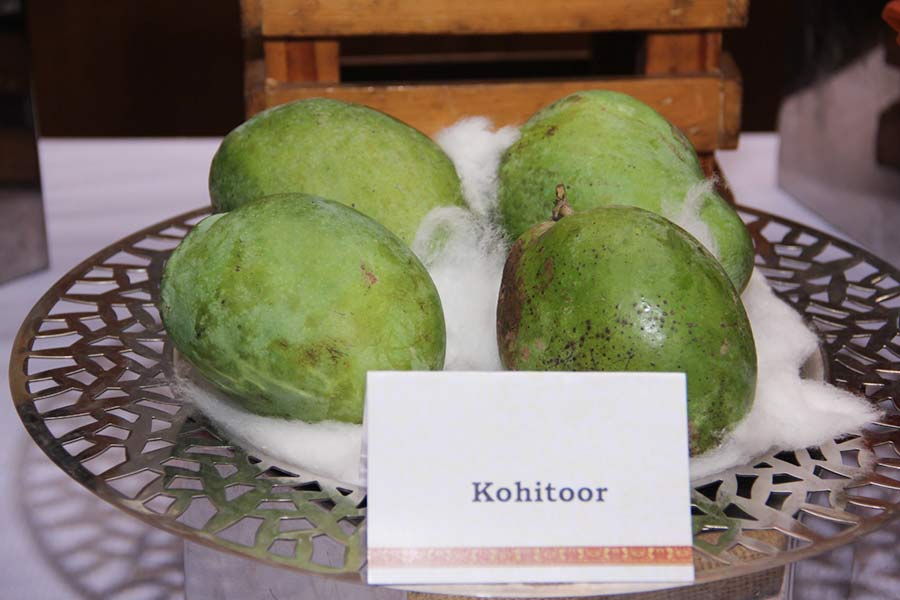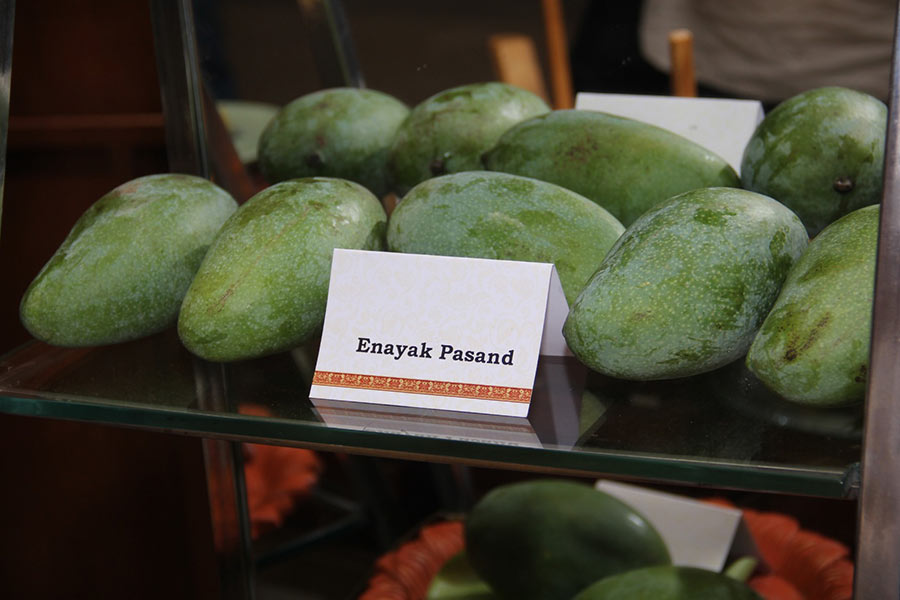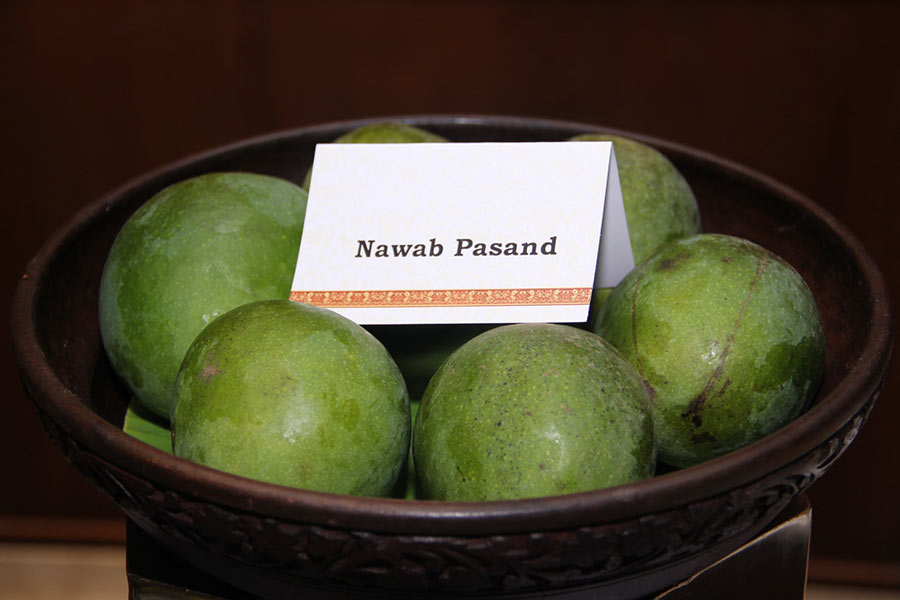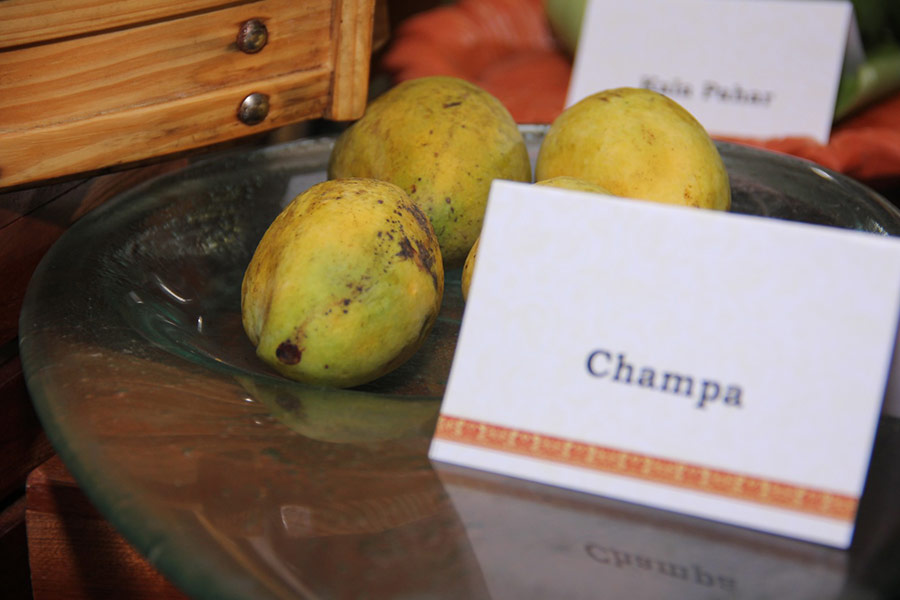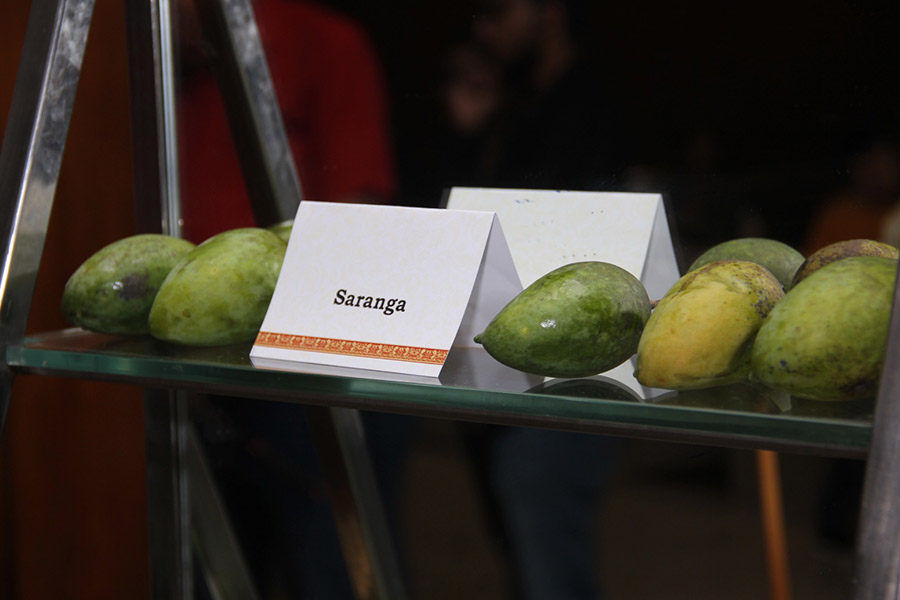Murshidabad, once the seat of Bengal’s Nawabs, has come alive this June with the Azimganj Mango Festival 2025 — a month-long celebration of the region’s legendary mangoes, till June 30. Organised by the Murshidabad Heritage Development Society and House of Sheherwali, the 10th edition will showcase over 150 heritage varieties. As the festival begins, here are some of Murshidabad’s most prized mangoes you should know about — each one steeped in history and bursting with flavour.
Kohitoor
The Kohitoor is considered the most delicate and sensitive of all mangoes — and also the most difficult to handle. This legendary variety from the Hakim Aga Mohammadi Bagh was so fragile that it had to be hand-plucked. If it touched the ground, it was said to lose its flavour. Golden yellow and prized for its subtle taste, the Kohitoor must be wrapped in cotton wool to stay fresh. It’s turned every 12 hours to ripen evenly and sliced not with a knife, but with a sharp bamboo wedge to preserve its texture and aroma.
Enaet Pasand
The Enaet Pasand is a beautiful mango from Murshidabad’s famed ‘pasand’ series, popularised during the Nawabi era. Named after Enaet Khan, a jagirdar who admired and patronised this variety, it carries a legacy of royal favour. Medium-sized, weighing between 200–300 grams, it has a thin skin, juicy flesh, and a rich, flavourful pulp—making it a true connoisseur’s choice among heritage mangoes.
Nawab Pasand and Rani Pasand
Both Nawab Pasand and Rani Pasand are age-old mangoes from the era of the nawabs, who ruled Bengal in the 18th century. Nawab Pasand is a juicy mango named by Nawab Syed Jaynal Abedin Khan. Rani Pasand is popular in Murshidabad and is part of the district's heritage. Its characteristics include early maturing, sweet flesh and yellow skin when it ripens. It’s not as big (around 200g) as some other varieties, but exquisite in taste.
Champa
The Champa is a mango variety that holds a place of pride in Murshidabad’s mango heritage. Known for its fragrant, golden-yellow flesh that carries the distinct aroma of the Champa (Plumeria) flower, it is as evocative as it is delicious. While its origins are debated, a popular legend claims it was named after Champabati, a famed dancer of the Mughal era — adding a touch of romance to its regal legacy.
Bimli
The Bimli mango carries with it a story as rich as its flavour. During the reign of Nawab Mir Jafar in the mid-18th century, Murshidabad’s elite maintained pramod kanans — leisure gardens where they relaxed with friends and entertainers. In one such garden, a kind-hearted orchard keeper named Nitab Sk, known for cultivating new mango varieties, worked alongside a diligent maid named Bimli, a Hindu woman. Impressed by her dedication, he broke tradition — previously mangoes were named after nobility — and named a new mango variety after her. The Bimli mango, with its reddish-yellow skin and sweet, juicy flesh, is a tribute not just to its taste, but to a rare gesture of inclusivity and respect. It typically weighs around 200–250 grams.
Saranga
The Saranga is a classic germplasm of Murshidabad, once favoured by the Mughals for its juicy, sweet flesh and distinctive shape. Uniquely resembling the Bengali numeral ‘five’, with a beaked lower portion, this thin-skinned, small-sized mango weighs around 150 grams. Its rich flavour made it a favourite among Bengal’s nawabs, amirs, and umrahs, and it was often sent as a prestigious gift, carefully packed in special buckets.
Gulabkhas
Gulabkhas has enjoyed royal patronage since the Mughal era and remains one of Murshidabad’s most prized mangoes. True to its name, it carries a delicate hint of gulab (rose) in both aroma and taste, with the top of the fruit blushing like rose petals. Weighing 250-300 grams, its refined flavour and appearance make it a sought-after export, especially in places like Dubai and Oman.
Chandan Kosa
During the rule of the Nawabs in Murshidabad, the mejaji — the connoisseur Nawabs — were especially fond of this uniquely flavoured mango. Small and weighing under 200 grams, this thin-skinned mango is prized for its juicy flesh and distinctive aroma reminiscent of sandalwood, offering an exquisite taste and scent that delighted the refined palates of the region’s elite.
Mohanbhog and a few others
Murshidabad is home to around 150 varieties of mangoes, each with its unique flavour, aroma, and history. This rich diversity reflects the region’s long-standing tradition of mango cultivation, nurtured by Nawabi patronage and Mughal influence, making it one of the largest mango-growing regions in India. The Mohanbhog mango, cherished in Murshidabad, derives its name from Hindu tradition and is offered to Lord Krishna as a sacred fruit. Medium to large, weighing 300g-400g, it boasts a greenish-yellow skin and an exceptionally sweet, premium-quality flesh. The other mangoes found here are Kishanbhog, Pathar Kuchi, Rani, Himasagar, Bhawani, Molamjam and more.
